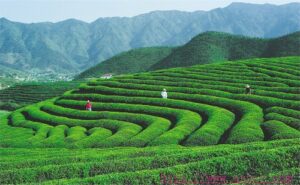Mountains Grow Coffee
There are a number of reasons that coffee grows best in the mountains, including the cool temperatures, rich soil, and interspersed dry periods. These factors influence the amount of caffeine, sugar, and citric acid a cup of coffee can contain. Other elements that contribute to the quality of coffee include nitrogen, which is important for the buildup of amino acids and caffeine. Boron, on the other hand, is important for the development of cell walls and cell division. It is also involved in several enzyme activities and plays an important role in flowering, fruit set, and yield.
Because volcanic soil has high vesicles, it is perfect for coffee cultivation. In addition, volcanic soils are deep and well-draining, allowing them to retain water. Low-elevation coffee regions impose harsher growing conditions for coffee. They produce coffee with a softer bean structure and a blander taste. However, the benefits of growing coffee in the mountains far outweigh any drawbacks.
The rapid ripening of coffee beans causes the quality of the resulting bean to decline. Continuous exposure to high temperatures also damages coffee plants by stunting growth and yellowing leaves. It can even spawn stem tumors. Amounts of caffeine produced by coffee plants vary from one region to another. Seven Mountains Coffee is a global commodity and can be a valuable source of food for many countries. It is estimated that a cup of coffee in a mountain region is worth $500 million.
The geography of the coffee that is grown in the mountains has a significant impact on the taste. This is why roasters note the region or country where their coffee was grown. Elevation also plays a big role in the quality of the coffee. Higher is not necessarily better; 4,000 to 5,000 feet is considered high enough for high-quality Arabica coffee. In Costa Rica, for example, coffee is grown between four and five thousand feet above sea level.

Why Do Mountains Grow Coffee?
The climate in the mountains is very different to those of low-lying lands. Coffee trees need a large amount of nutrients to grow, and these nutrients are delivered to the plants through the soils. Because these soils are different, even single plantations can have wildly different quality. Moreover, a region’s coffee may be superior to another’s. Soil composition and temperature are key factors that determine coffee’s flavor.
According to the Intergovernmental Panel on Climate Change (IPCC), there is a significant possibility that coffee will become less abundant. As the world’s temperature increases, the minimum altitude that coffee can grow will increase. This could have disastrous consequences for coffee cultivation in the Central American highlands. As the minimum elevation is raised from three to four thousand feet above sea level, coffee production in Ethiopia could experience major setbacks. It is hoped that coffee farmers will develop methods to conserve the environment and protect their livelihoods.
The Blue Mountains in Jamaica have a cooler climate than the rest of the country. Due to the area’s location, the Blue Mountains are exposed to moisture-laden North East Trade Winds. The North East Trade Winds are often cloudy, resulting in significant cloud cover. This reduces sunlight, slowing the growth of coffee cherries and improving the taste. Hence, coffee grown in the mountains is the best. However, the mountains are not the only places that grow coffee.